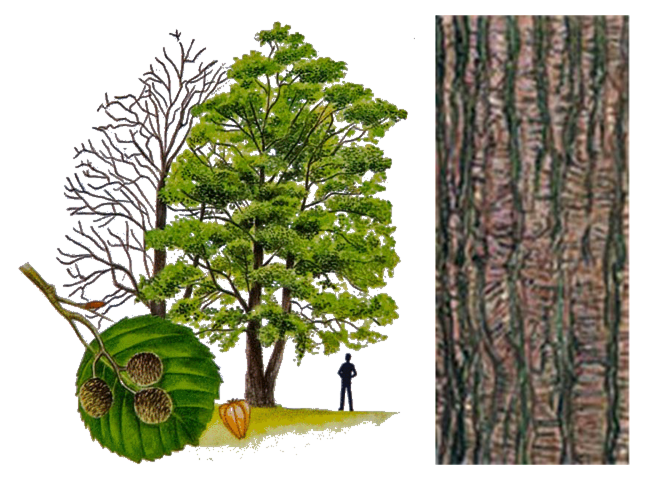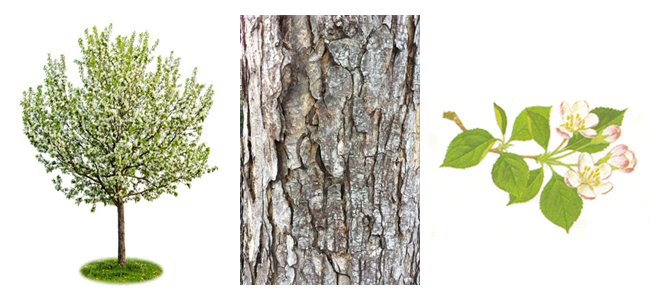


|
| Tweet |
|
|
|
|
 |
 |
|
|
The shafts and handles of magic wands are crafted from the wood of magical trees. Here are descriptions of two such trees taken from the book Magical Wands - A Cornucopia of Wand Lore, which documents in detail 24 magical trees commonly used in the crafting of magic wands: Alder WandsAn alder wand is any wand that is crafted out of wood from an alder tree. More specifically, an alder wand is any wand that has an alder shaft, an alder handle, or both. Alder TreesWand makers have historically used wood from the alder trees of their homelands for making alder wands. For centuries, European wand makers have made alder wands from the wood of the Common or Black alder (Alnus glutinosa), although wood from the Italian alder (A. cordata) has also been used. On the other hand, Asian wand makers have typically used the wood of the Japanese alder (A. japonica), Nepalese alder (A. nepalensis), or Manchurian alder (A. hirsuta). Finally, North American wand makers often use wood from the Red alder (A. rubra) or White alder (A. rhombifolia), whereas South American wand makers favor Andean alder (A. acuminata). The makers of alder wands must be able to recognize alder trees, even though they can vary greatly in height. For example, the red alder and the common alder are the largest of the alders. Their average height is from 55 to 75 feet, and both may reach over 90 feet. Conversely, the green alder is a shrub that rarely exceeds 15 feet high. 
Illustration: Common Alder Tree with Twig and Bark The common alder tree grows rapidly, flowers from February through early April, and drops its dark leaves in autumn. It can usually be found growing in marshy areas or in the moist or wet ground near the edges of rivers, streams, or lakes. The best time to harvest branches of the alder tree is during the week of the summer solstice, the longest day of the year. Alder trees have the following folk names: Gummy, Gluey, Rugose, and Tree of the Fairies. Magical Properties and UsesAlder wands have alder wood for the handle, the shaft, or both. Because the degree to which a specific type of wood strengthens spells of a specific spell set is roughly proportional to the amount of that wood in the wand, there is not much difference between using that wood for the handle or shaft. However, the wood’s ability to strengthen spells is roughly doubled when it is used for both handle and shaft. As the following table shows, the magical properties of alder wood are the same for all types of alder trees.
ElementalAlder trees have the elemental Water for they are often found in moist or wet ground near the edges of rivers, streams, or lakes. Alder wands work best when strengthening water spells from the following spell sets:
PhasesAlder trees have the phase Light, and alder wands are quite good at casting defensive spells. Alder wands work best when strengthening light spells from the following spell set:
Alder wands also work best when strengthening twilight spells from the same spell set:
Finally, alder trees also have the phase Darkness, and alder wands work best when strengthening dark spells from the following spell sets:
GenderAlder wood has the gender Masculine, and alder wands thus tend to work better for wizards than witches. Additional CharacteristicsAlder wands are widely recognized to work best for the casting of offensive and defensive spells. Thus, they are best suited for brave witches and wizards such as those who seek adventure in journeys and quests made dangerous through contact with shadow creatures, especially the formerly human (e.g., vampires and werewolves) and near human such as incubi and succubi. The ability of alder wands to increase the strength of offensive and defensive spells makes them highly prized by dark witches and wizards, especially those who seek power and riches through violence and intimidation. Finally, alder wands are often used by those courageous witches or wizards who serve the magical community by hunting those mages who break our laws and conventions. Famous WandThe following famous wizard used an alder wand:
Additional Magical UsesIn addition to its use in wands, alder wood has the following magical uses:
Working with Alder WoodCommon alder wood has the following properties related to wood working and the crafting of wands:
Because of its softness, alder wands are very susceptible to damage. Care should therefore be taken when buying an alder wand to ensure that it has been properly strengthened by appropriate magical spells or the incorporation of a magical core (such as a sliver of dragon scale) that adequately enhances the toughness of the wood. Were it not for the important magical properties of alder wood and the existence of ways to strengthen it, the natural softness of the wood would greatly limit its use in wands. Apple WandsAn apple wand is any wand that is crafted out of wood from an apple tree. More specifically, an apple wand is any wand that has an apple wood shaft, an apple wood handle, or both. Apple TreesApple trees have the folk names: Fruit of the Gods, Fruit of the Underworld, Silver Branch, Silver Bough, and Tree of Love. Apple trees are widely found in middle latitudes, especially in the northern hemisphere. Almost all apple wood wands are made from the wood of the common domesticated apple tree (Malus domestica). Rarely, wands have also been made from the wild ancestor of the domesticated apple tree (M. sieversii), which can still be found growing in Western Asia. The easiest way for a wand maker to recognize an apple tree, at least during the fall, is naturally to look for the apples, either on the tree or lying on the ground beneath it. They have white or slightly pink flowers in the spring, bear fruit in the fall, and lose their leaves during the winter. They are relatively small trees and are typically between 10 and 20 feet tall, especially when pruned to make the apples easier to harvest. The biggest apple trees can grow up to 40 feet when left alone. When they are grown in full sunlight, apple trees have many large branches low on the trunk, giving them a canopy of branches and leaves that is typically wider than the tree is tall. 
Illustration: Apple Tree, Bark, and Twig Magical Properties and UsesApple wands have apple wood for the handle, the shaft, or both. Because the degree to which a specific type of wood strengthens spells of a specific spell set is roughly proportional to the amount of that wood in the wand, there is not much difference between using that wood for the handle or shaft. However, the wood’s ability to strengthen spells is roughly doubled when it is used for both handle and shaft. As the following table shows, the magical properties of apple wood are the same for all types of apple trees.
ElementalApple trees are one of the few trees that have the elemental Quintessence. Apple wands work best when strengthening the following types of quintessential spells:
Apple trees have the elemental Fire, probably because of their bright red fruit and the sap wood being a light red in color. Apple wands work best when strengthening the following types of fire spells:
Long associated with fertile soil and farm land, apple trees also have the elemental Earth. Apple wands work best when strengthening earth spells from the following spell sets:
PhaseApple wood has phase Light, and apple wands work best when strengthening light spells.
GenderApple wood has the gender Feminine, and apple wands thus tend to work better for witches than wizards. Additional CharacteristicsThe common humble apple tree is one of the most magical of trees. Not only is it one of the few trees that excel at casting quintessential spells, apple is also one of the very few woods that works best strengthening spells of three different elementals. Apple wood is also strongly tuned to the Light, and apple wood wands are rarely if ever used by dark witches and wizards. Famous WandThe following famous witch used an apple wand:
Additional Magical UsesIn addition to its use in wands, apple wood has the following magical uses:
Working with Apple WoodApple wood has the following properties related to wood working and the crafting of wands:
Other Commonly Used Wand TreesOther commonly used wand trees described in detail in the book Magical Wands - A Cornucopia of Wand Lore include:
|
||||||||||||||||||||||||||||||